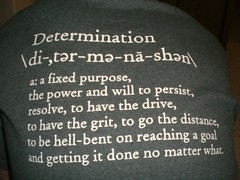Do you include your photo on your resume?

Resume
I’m always being asked about what to include or remove from resumes. One of the first of these questions is often; do you include your photo on your resume?
Here is a short article, courtesy of The Muse. I have edited some of the content because it was written for an American audience. Nonetheless, it’s a really good summary of the best way to start out.
There are some parts of your resume that should be removed because they are either putting you to disadvantage, or taking up valuable space.
Some removals are absolutely essential, otherwise, applicant tracking system (ATS) software that most large organisations use may not generate your resume correctly, which means you’ll lose any chances of getting a call. In particular, be careful when using bullet points and other features when sending the document as a pdf file.
So, what should you delete from your resume?
Photos – Unless you are asked for one, do not include a photo.
Full address – There are some post-code biases (unconscious/sub-conscious) that you really do not want to impact reader perceptions.
Objective – Employers don’t really care what your goal is – they want to know what you can do to support their goals. Better terms to use here are “career summary” or “qualification summary.” This brief statement should tell the employer, using data from the job posting, that you meet the main required qualifications.
GPA and study scores – If you graduated less than three years ago and have a GPA of 3.5 or above, you can keep it on your resume. Unless you are asked to include them, take out standardized test scores. Once you’re beyond three years out of school, take your GPA off (unless of course you’re told to include it).
University you didn’t graduate from – The school that matters is the one from which you graduated. If you feel compelled to include a school you transferred from, make sure to not include it separately from the school from which you graduated.
Cliche phrases – You do not gain much by saying that you are “passionate”, in fact it can be a turn-off. Saying something like, “seasoned manager”, tells the reader nothing, you’re not speaking specifically enough about your experience. Work to find ways to say what you do clearly and concisely.
Acronyms – Many acronyms are industry or company specific. That’s why you cannot use them without first defining them. The best way to do this is to spell out the first instance and put the acronym in parentheses after it; you can use the acronym alone from then on.
Tables – Using tables will almost a guarentee your resume will not be read in an ATS. If the system cannot read it correctly, you’ll lose your chance to be considered for jobs.
Irrelevant experience – If you have paid work or volunteer experience that is not relevant to your career goals (i.e., you didn’t obtain any transferable skills), you should list those briefly under a headline such as “previous experience.” You don’t need any details except for your title, organisation, location and years.
Jobs 10 years or older – Remove bullets for jobs over 10 years old, unless you haven’t demonstrated the same skills in your work since. Incorporate any transferable skills that are not apparent elsewhere in your resume into your career summary or under “technical skills,” which can fall at the end of most resumes under “additional information.” If you’re in a technology field, you may want to consider moving those skills underneath your career summary.
Use hyperlinks sparingly – Hyperlinks are good when used effectively. Do not hyperlink every company you’ve worked for and every mention of a project on a website or in an article. Choose only those that you consider of significance – you may want to check with a colleague or friend to find out if they agree with your choices. If you’ve written for a publication, been quoted in a major article, or contributed to an article, those are worth hyperlinking. If you have quite a few, you should consider titling the section “select publications” or “select media,” and listing and linking to only a few.
Finally – This broad list of what to remove from your resume is how I and many of my associates consider as best practice for the very competitive job search environment. If you feel strongly about whether you include your photo on your resume; if it seems to you appropriate, this is entirely your decision. My role is to ask to you consider the information you provide from the recipient’s point of view. He or she has never met you.
Your resume is designed to get you an interview and you have very little time in which to attract the reader’s attention. Try not to allow any doubt. It’s like in property real estate; buyers look around to find reason Not to Buy. Don’t give a recruiter reason Not to Recruit You!
Similar articles

“There is nothing Clever about not being Happy” Arnaud Desjardins
That’s a pretty bold statement, Monsieur Some Gardens! I found the quote in a gorgeous book, Buddhist Offerings 365 Days, Edited by Danielle and Olivier Follmi, and published by Thames and Hudson. Alongside of each days’ quote is a stunning photograph, and against this particular quote is a photo of a horse lying on its […]

“Where there’s a Will, there’s a Way”
I heard myself saying this to a despondent young man the other day, and wondered how helpful I was being. Oh dear, questioning my own tips might be a troublesome habit, however it does serve to galvanise me into action to check on my sources and ponder the idiom.

20th March is International Day of Happiness
“Each individual is master of his or her destiny: it is up to each person to create the causes of happiness” The 14th Dalai Lama 20th March is International Day of Happiness What a pity we need special days and coffee table books with images of smiling faces to nudge us into a happiness […]
